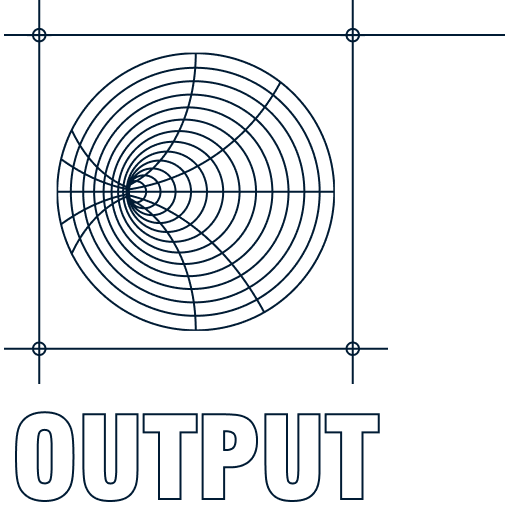Delivering Greater Project Outcomes with Systems-Led Infrastructure
How can we Transform Infrastructure Performance by 2030?
With the latest UK Industry Performance Report finding only 66% of projects are delivered on budget, the government has tasked the industry with improving the delivery approach. Not just in the interests of project management, but for the people who’ll ultimately be using the infrastructure once it’s built.
The Transforming Infrastructure Performance (TIP): Roadmap to 2030 points to a systems approach as the answer. VVB explains how systems-led infrastructure can help you get there with better outcomes for your projects.

From civils to systems
Focusing on Outcomes not Edifices
The industry understands that construction and engineering projects require input and collaboration from different teams and skills, but they’re traditionally being led by civils teams, who represent just one piece of the puzzle.
The result is a way of working that doesn’t treat the infrastructure as more than the sum of its parts. A focus on its structure comes at the expense of the systems needed for use throughout its lifecycle. The output becomes limited to fitting components together, instead of how they’ll actually be used once that stage is complete. It’s short-term thinking leading to diminished gains.
So how can an infrastructure project be led with the outcomes driving delivery?
Rather than giving one specialism total oversight of project delivery, a more fluid, flexible leadership model entrusts responsibility to the right specialisms, as and when they’re needed. To do so, the systems-led approach looks beyond the build – long after the civils have hung up their hardhats – by asking the crucial question: how are you going to operate and maintain the infrastructure?
“It is easy to see that the system – not the civils – provides the infrastructure services on which people rely.”
Andrew Crudgington, Climate Change Associate, CIHT
The systems that determine the successful operation of the Infrastructure need to lead the project and be considered from the start, so they’re supported by the structure. Shoehorning them in as an afterthought once the structural element has been built minimises their impact and risks additional work to integrate them correctly.
From there, it’s about involving the right people at the right time to deliver.

More connected, not less
Giving the project team access to the right specialism at the right time
VVB isn’t alone in noticing the need for clearer roles and responsibilities in infrastructure and engineering projects. Project 13 emphasises the importance of owners owning projects and giving direction on everything. Uniting stakeholders in this way is made achievable with the systems-led approach that listens to the right voices.
The current hierarchical leadership model breaks down these connections. The alternative nucleus management keeps the expertise and specialisms close to the project’s centre, shared laterally across phases and teams. Collaborative engineering is driven by this more agile leadership.
Having specialists in place from the start allows the project to evolve around that constant throughline: the output focus. The project is aligned towards it and buy-in is improved. Arrive too late, after the civils structure is built, and the systems will have to fit the constraints it imposes.
“The new approach is about moving from a reliance on transactions to the development of effective delivery organisations.”
Andrew Crudgington, Climate Change Associate, CIHT
The same applies to the Supply Chain: go out to suppliers later in the process and you’ll get what you’re given – usually, their cheapest output, as a result of buying competitively down the line. The systems-led approach equips them with the knowledge of the project’s outcomes from the start, considerate of all the KPIs and dependencies, so you’re more likely to receive their best output.
Without shifting to a systems-led approach, project delivery will remain fragmented. Handovers will continue to not be factored in from the start, a lack of third-party liaison will maintain miscommunication.
To change this by 2030, clients need to move closer to specialists, tightly aligned to the project scope and its outcomes.

A cultural shift
Promoting a philosophy that designs out waste and inefficiency
One of the clearest challenges to the industry meeting the TIP 2030 programme targets is the role of design. Prioritising Outputs in the design brief sits at the core of the systems-led approach and its ethos of designing for the full project lifecycle.
The late involvement of specialists prevents this from happening. Bringing specialists in early helps avoid rework by the delivery teams down the line. They can collaborate with the project team to design the systems with project outcomes such as carbon reduction and processes like DfMA in mind. Above all, their designs are buildable and right the first time.
Cost certainty will benefit as a result. The current approach of designing the structure first leads to costs spiralling out of control from rounds of reworking the systems design. Leading with the systems provides certainty in delivery, allowing the focus to be on driving efficiencies.
“By separating design from construction and breaking projects down into hundreds of subcontracts we impede the flow of knowledge from the supply chain to the front end of the project where value is created.”
Andrew Crudgington, Climate Change Associate, CIHT
As well as improved construction efficiencies, systems-led infrastructure is really focused on the outcomes for the end user. By designing the infrastructure for the people using it, the project is positioned to meet wider outcomes around social value and serve communities long into the future.
The Flourishing Systems report reminds us that we’re assembling more than bricks and mortar. Infrastructure needs to be designed to support the movement and interaction of people in a safe, comfortable environment – and continue doing so over time.

Evidence-based optimisation
Delivering project efficiencies with data, closing the gap with technological change
While the current approach to Infrastructure delivery narrows the project’s vision and field of view to a static structure, systems-led infrastructure understands that the asset’s systems are a living thing. A tunnel, for example, might exist for 100 years, but the civils team won’t be returning to it once it’s built. It’s a mistake to view the asset as standing still while time, people and society move on around it.
Data is the key to preparing the infrastructure for this interaction with the end user. The Systems Approach to Infrastructure Delivery (SAID) describes data’s role as oiling the project – “a golden loop” tying the project back to the systems, and the systems back to that people-focused end result.
The question then becomes what data is needed and how it should be used. It needs defining in terms of what information is required to deliver and operate the asset. For the tunnel, that means those considerations around how it will be used – from the increasing numbers of battery-powered cars passing through, to the camera and lighting systems ensuring their safety.
“It will require data from all parts of the system to inform decision-making, from improved information management in delivery to the creation of digital twins for asset maintenance and optimisation.”
Nick Smallwood, CEO, IPA
The project’s systems need to be set up within this feedback loop in order to convert the data into meaningful insight on those goals and considerations. Technology and digitalisation are only becoming more helpful here. Systems-led infrastructure uses this technological growth to expand the automated approach and digitalisation of processes like DfMA.
Digital twin construction develops the concept of a ‘cyber-physical’ asset to massively upgrade the feasibility of designs. With the systems being inside the 3D model, you can visualise how the infrastructure will operate in its entirety, and plan the job around how you’re going to build it.
Technology will change far quicker than the civil asset life will expire, so project teams need to be able to adapt to these new system technologies and build assets that can be updated to provide data-driven solutions.
It’s a future made possible by systems-led infrastructure.

Light at the end of the tunnel
Looking towards a systems-led future
The systems-led Infrastructure approach has already begun to prove its benefits in UK infrastructure projects. The ICE’s Putting the Principles Into Practice report reviewed several case studies of how systems thinking works in practice.
As ESG targets have an ever increasing influence on the standard that infrastructure is expected to meet, the systems-led approach can direct projects towards community outcomes and sustainable construction from the outset. It’s these outcomes that will help us not only deliver projects more successfully, but redefine our industry’s reputation by delivering infrastructure with long-term value.
“On time and within budget is no longer enough.”
Andy Mitchell Chair of the Infrastructure Client Group and CEO of Tideway
The incentive behind Transforming Infrastructure Performance is to increase productivity, but it’s more than just that. Systems-led infrastructure ensures we remain focused on building a future that supports human progress.
The industry appears to have become complacent in taking an approach that the Government has made plain isn’t in the best interests of either us or our end users. We’re now met with an opportunity to shift to a smart engineering approach. One that keeps an eye on the end result and end users throughout. One that creates a positive operational life and legacy. One that is systems-led.
What Next?
Let’s make a success of the systems-led Infrastructure approach together
By involving VVB as a specialist earlier in the design process we can partner with you to help focus on Outcomes, building on our success in applying a systems approach to infrastructure delivery. We’ll work with you to translate the theory into practice and deliver systems-led infrastructure with integrity.